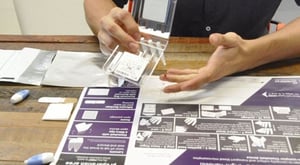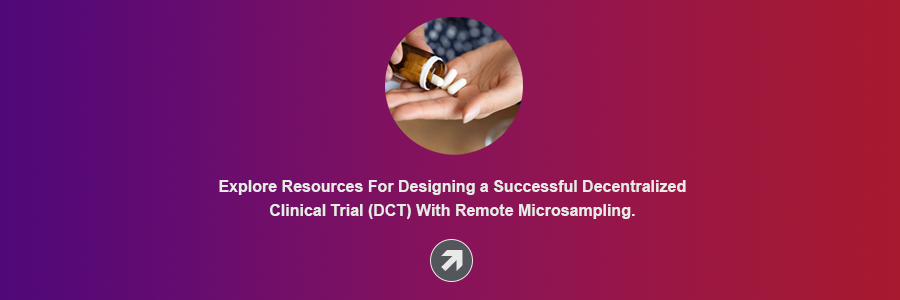Share this
patient-centric healthcare: how to thrive in a new era
by Neoteryx Microsampling on May 9, 2018 12:01:00 AM
 Many clinical labs, hospital labs, and others in the healthcare space are not as concerned as they should be with the rise of patient-centric medicine. They may be focused on cost-cutting, on increasing volume, or on hitting other short-term, first-order goals. However, the age of patient-centric practice is already in progress, and in order to thrive, all providers will have to adapt, preferably sooner than later.
Many clinical labs, hospital labs, and others in the healthcare space are not as concerned as they should be with the rise of patient-centric medicine. They may be focused on cost-cutting, on increasing volume, or on hitting other short-term, first-order goals. However, the age of patient-centric practice is already in progress, and in order to thrive, all providers will have to adapt, preferably sooner than later.
A piece in Dark Daily, "Is a Patient-Centric Approach to Clinical Laboratory Management the Best Way to Move from Volume to Value?" by Joseph Burns, notes the disconnect that some labs have regarding the urgency of moving to a patient-centric business model. "With the era of fee-for-service medicine under siege, every clinical laboratory and anatomic pathology organization needs a strategy for getting paid, as new reimbursement models that support patient-centric care will make up a larger portion of lab revenues," writes Burns.
Burns goes on to note some causes for optimism. Many labs already have the resources they need to transition to an increasingly patient-centered approach. They simply need to take stock, marshal their resources, and face and embrace the oncoming change.
Here are a few big ideas that lab directors and others in the clinical testing, clinical research, and clinical trials spaces can use to prepare for a new patient-centered reality
Make Sure Your Data Approach Is Up to Date
Compared to a volume-centric or accessioning-centric business model, a patient-centric business model requires different, sometimes more creative approaches to the gathering and leveraging of data.
The Burns piece includes an illuminating interview with Roger Atlas, CEO of Southern California-based Atlas Medical. Atlas draws attention to longitudinal data as a great tool for clinical labs. "Clinical labs that have longitudinal data on patients are supporting the continuum of care for the patient and are delivering greater value to their physician customers," Atlas says.
By simply adding lab test orders to the data repository, notes Atlas, labs can save themselves all sorts of unneeded testing, along with the associated patient and staff strife.
Change Your Business Model (Before the Business Changes You)
"Trends reshaping clinical care and the laboratory testing market are almost completely dependent on being patient-centric," Atlas says, highlighting the needed reduction of duplicate and unnecessary testing, reforms in testing and reporting, and a greater premium placed on patient outcomes.
"Every initiative that laboratories need to do to support the continuum of care is focused on the patient," says Atlas.
To spot important trends, start with basic wisdom about patient-centered healthcare and from there, strategize outward and onward. It is safe to assume that nearly every new wrinkle in the healthcare landscape will result from a shift toward a more patient-centric model
Embrace New Technologies
Innovation happens at the edges where the old meets the new. Many of the most important recent innovations have sprung from simple improvements in user experience, a major key to patient-centric medicine.
The advent of microsampling technology provides one useful example.
 Thanks to advances in technology, it is now possible to generate previously unbelievable amounts of useful data from very small amounts of blood or other biological fluid. However, the potential of smarter specimen collection had previously been stymied by the lack of innovation at the sampling event itself. The Mitra microsampling device was developed to allow volumetrically accurate micro-volumes of fluid to be collected by nearly anyone, anywhere, at any time.
Thanks to advances in technology, it is now possible to generate previously unbelievable amounts of useful data from very small amounts of blood or other biological fluid. However, the potential of smarter specimen collection had previously been stymied by the lack of innovation at the sampling event itself. The Mitra microsampling device was developed to allow volumetrically accurate micro-volumes of fluid to be collected by nearly anyone, anywhere, at any time.
It started with a goal of improving the patient experience. What resulted was a workable alternative both to venipuncture and to outmoded dried blood spotting methods. And now, with the rise of remote sampling, labs can expand their reach in ways never before anticipated. For such a simple device, that’s pretty good!
When considering new technologies, ask yourself one question: "Is it patient-centric?" This is a more compassionate approach - and the future of your business may depend on it.

Share this
- Microsampling (206)
- Research, Remote Research (119)
- Venipuncture Alternative (105)
- Clinical Trials, Clinical Research (83)
- Mitra® Device (73)
- Therapeutic Drug Monitoring, TDM (51)
- Dried Blood Spot, DBS (39)
- Biomonitoring, Health, Wellness (30)
- Infectious Disease, Vaccines, COVID-19 (24)
- Blood Microsampling, Serology (23)
- Omics, Multi-Omics (21)
- Decentralized Clinical Trial (DCT) (20)
- Specimen Collection (18)
- Toxicology, Doping, Drug/Alcohol Monitoring, PEth (17)
- Skin Microsampling, Microbiopsy (14)
- hemaPEN® Device (13)
- Preclinical Research, Animal Studies (12)
- Pharmaceuticals, Drug Development (9)
- Harpera Device (7)
- Industry News, Microsampling News (5)
- Antibodies, MAbs (3)
- Company Press Release, Product Press Release (3)
- Environmental Toxins, Exposures (1)
- July 2025 (1)
- May 2025 (1)
- April 2025 (2)
- December 2024 (2)
- November 2024 (1)
- October 2024 (3)
- September 2024 (1)
- June 2024 (1)
- May 2024 (1)
- April 2024 (4)
- March 2024 (1)
- February 2024 (2)
- January 2024 (4)
- December 2023 (3)
- November 2023 (3)
- October 2023 (3)
- September 2023 (3)
- July 2023 (3)
- June 2023 (2)
- April 2023 (2)
- March 2023 (2)
- February 2023 (2)
- January 2023 (3)
- December 2022 (2)
- November 2022 (3)
- October 2022 (4)
- September 2022 (3)
- August 2022 (5)
- July 2022 (2)
- June 2022 (2)
- May 2022 (4)
- April 2022 (3)
- March 2022 (3)
- February 2022 (4)
- January 2022 (5)
- December 2021 (3)
- November 2021 (5)
- October 2021 (3)
- September 2021 (3)
- August 2021 (4)
- July 2021 (4)
- June 2021 (4)
- May 2021 (4)
- April 2021 (3)
- March 2021 (5)
- February 2021 (4)
- January 2021 (4)
- December 2020 (3)
- November 2020 (5)
- October 2020 (4)
- September 2020 (3)
- August 2020 (3)
- July 2020 (6)
- June 2020 (4)
- May 2020 (4)
- April 2020 (3)
- March 2020 (6)
- February 2020 (3)
- January 2020 (4)
- December 2019 (5)
- November 2019 (4)
- October 2019 (2)
- September 2019 (4)
- August 2019 (4)
- July 2019 (3)
- June 2019 (7)
- May 2019 (6)
- April 2019 (5)
- March 2019 (6)
- February 2019 (5)
- January 2019 (8)
- December 2018 (3)
- November 2018 (4)
- October 2018 (7)
- September 2018 (6)
- August 2018 (5)
- July 2018 (8)
- June 2018 (6)
- May 2018 (5)
- April 2018 (6)
- March 2018 (4)
- February 2018 (6)
- January 2018 (4)
- December 2017 (2)
- November 2017 (3)
- October 2017 (2)
- September 2017 (4)
- August 2017 (2)
- July 2017 (4)
- June 2017 (5)
- May 2017 (6)
- April 2017 (6)
- March 2017 (5)
- February 2017 (4)
- January 2017 (1)
- July 2016 (3)
- May 2016 (1)
- April 2016 (2)


No Comments Yet
Let us know what you think